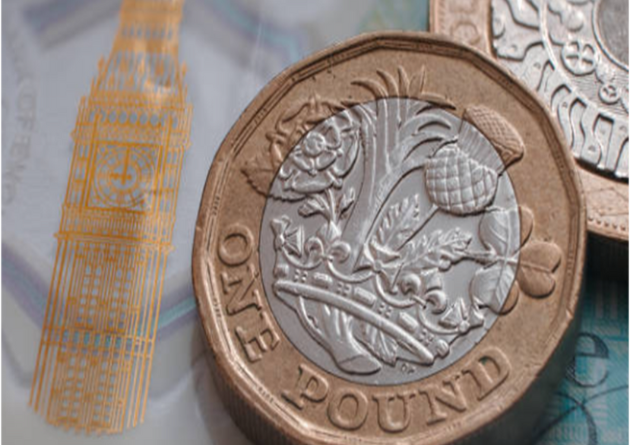Pound Drops as UK Economy Shows Signs of Slowing in Third Quarter.
- rabeelrana

The Pound Sterling (GBP) remains under pressure against major peers as weaker-than-expected UK economic data reinforces concerns over slowing growth and rising unemployment.
The Office for National Statistics (ONS) reported on Tuesday that the UK economy expanded by just 0.1% in the third quarter, missing expectations of 0.2% and slowing from 0.3% growth in the previous quarter. On an annual basis, GDP rose 1.3%, slightly below both forecasts and the prior reading of 1.4%.
Adding to the pessimism, unemployment climbed to 5% in the three months to September — the highest since February 2021 while monthly GDP contracted 0.1% in September, defying expectations for no change. Manufacturing output fell 1.7% and industrial production dropped 2%, reversing August’s gains and signalling a sharp loss of momentum in factory activity.
The weaker growth outlook has intensified market expectations that the Bank of England (BoE) could begin cutting interest rates as soon as December, particularly after recent labour market weakness. Investors now see rising chances of a shift toward looser monetary policy to cushion the economy from stagnation risks.
On the political front, reports from multiple UK media outlets suggest that allies of Prime Minister Keir Starmer are allegedly planning to oust him ahead of the Autumn Budget, due later this month. Political turmoil amid rising fiscal debt concerns could increase uncertainty in financial markets and drive gilt yields higher.
Despite the gloomy domestic backdrop, the Pound Sterling rebounded modestly to around 1.3165 against the US Dollar (USD) during the European session on Thursday, recovering from an intraday low of 1.3100. The move reflected broad-based weakness in the Dollar, rather than renewed confidence in the Pound.
The US Dollar Index (DXY), which measures the Greenback’s performance against six major currencies, slipped to near 99.15, its lowest level in nearly two weeks. The Dollar’s decline comes amid growing expectations that the Federal Reserve (Fed) will cut interest rates again in December, following two consecutive reductions earlier this year.
According to the CME FedWatch Tool, markets are pricing in a 67% probability of a 25-basis-point rate cut to a range of 3.50%–3.75%. A Reuters poll also showed that 80% of economists expect the Fed to ease policy again, citing ongoing labour market softness.
Echoing those expectations, Boston Fed President Susan Collins said on Wednesday that it is “prudent to normalize rates a bit further in 2025 as downside risks to the labour market have likely risen,” during remarks at the Greater Boston Chamber of Commerce.
In Washington, President Donald Trump signed a spending bill on Wednesday to end the 43-day government shutdown the longest in U.S. history.
